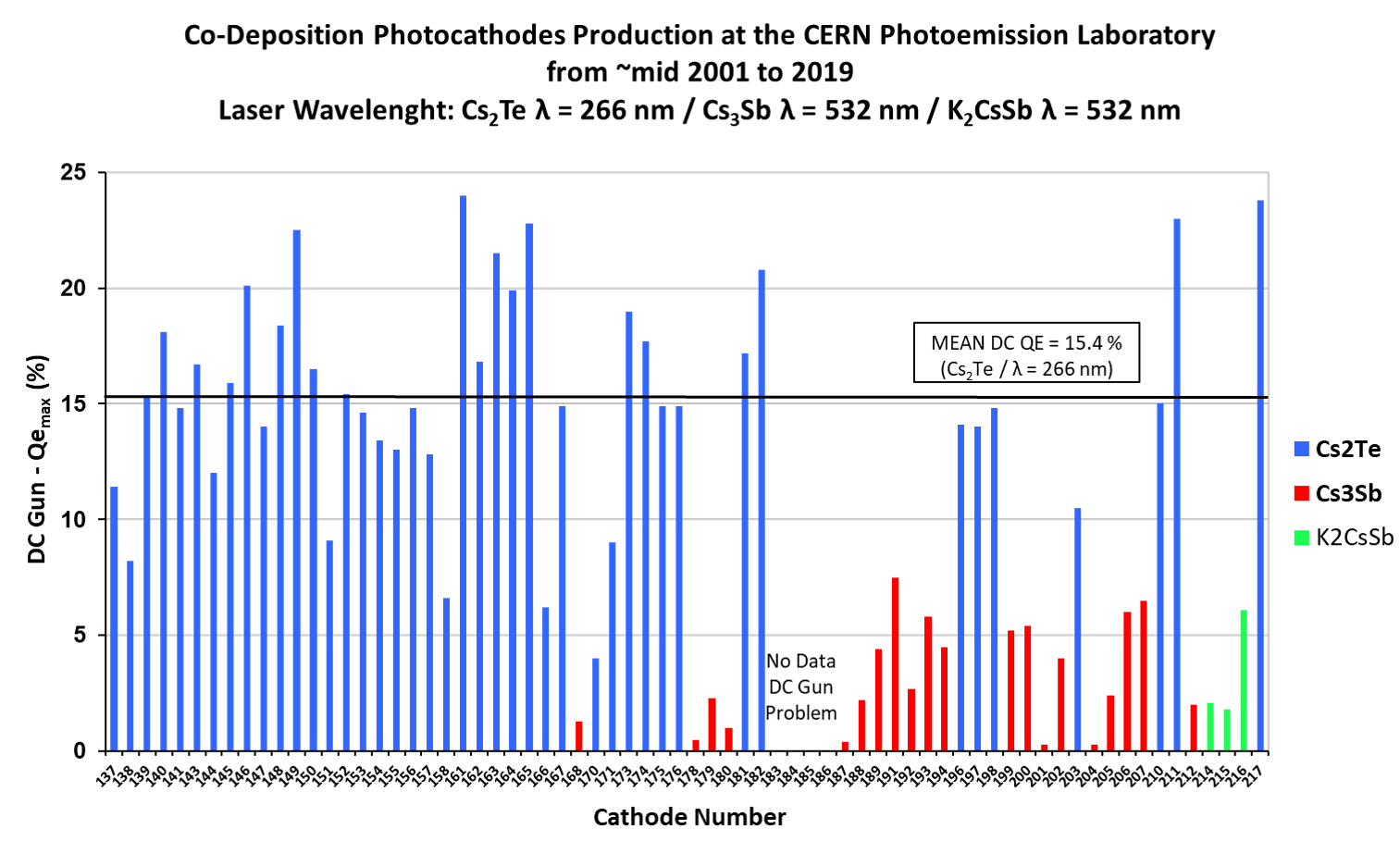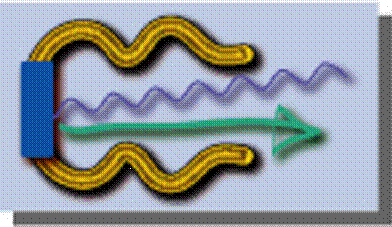About
The Photoemission Laboratory has been actively operational since 1989 after a few prior years of initial commissioning and testing. The laboratory had been commissioned for R&D and support of the CLIC Test Facilities (CTFs) for the drive beam generation under the framework of CLIC. Over the course of a few decades, the laboratory assumed the responsibility for photocathode development and support for the subsequent program CLEAR, and the AWAKE experiment. In continuation, the laboratory is expected to offer photocathode related infrastructure for CLEAR2 beamline, a sub-picosecond electron linac that is expected to become operational past 2020.
A total of over 221 photocathodes have been synthesized since the laboratory's inception. Data corresponding to the last couple decades showing the cathode number, type and quantum efficiency (QE) is shown in the figure below. A co-deposition method and copper substrate have been used for the cathodes represented in the figure.

Prior to 2001, a variety of photocathodes like Cu, Y, Sa, Cs-I, K-Sb, Na-K-Sb, Ti-O have also been synthesized on various substrates like Cu, stainless steel, and Mo using sequential deposition methods.
Some past external collaborators include CCLRC-RAL, LAL Orsay, Polytechnic University of Milan. An active collaboration of CERN with ASTeC within Daresbury Laboratory, UK, is primarily studying intrinsic emittance and surface roughness (via scanning tunneling microscopy (STM)) of CERN-produced Cs-Te and Cs-K-Sb photocathodes. A news article of this collaboration can be found here.
